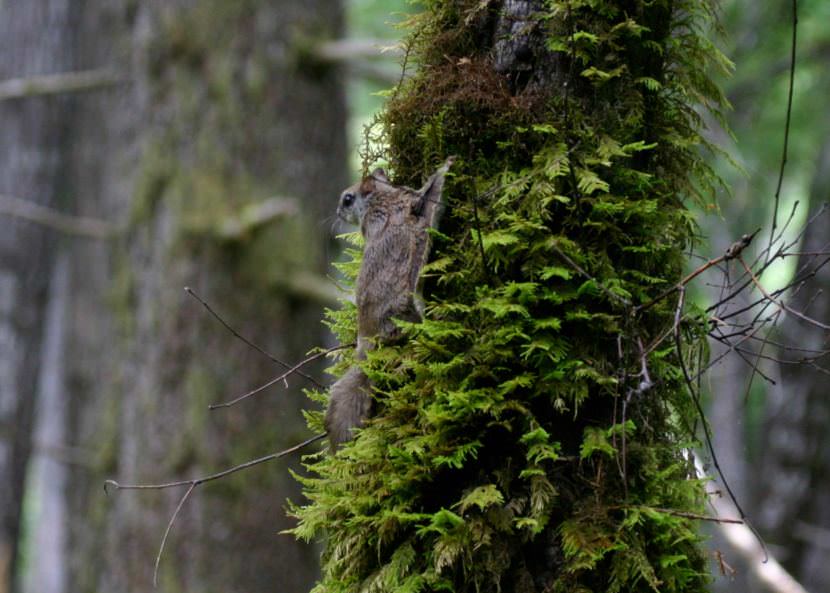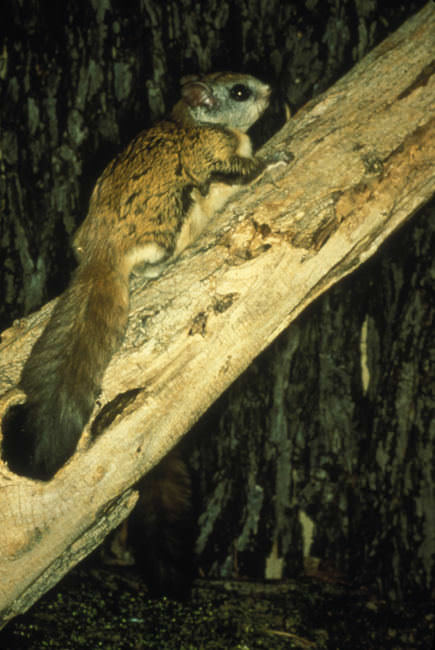
Researchers say they’ve found a new species of flying squirrel, and a Juneau biologist’s data from almost two decades ago played a key role in the discovery.
Allison Bidlack first studied the Prince of Wales Island flying squirrel population while working on her master’s degree at the University of Alaska Fairbanks.
Flying squirrels don’t really fly. They leap from trees and glide as much as 300 feet to escape from predators such as owls, marten and ermine.
Bidlack said the nocturnal mammals differ from the typical daytime red squirrel in that they have a thin, furry membrane between their front and rear legs, and a flat tail that’s used as a rudder.
“It’s really neat to see. If you capture one live and then let it go, it’ll often scamper up a tree and then immediately glide as far away from you as possible to the next tree,” Bidlack said. “It might do that a couple times just to get away.”
Bidlack is now director of the Alaska Coastal Rainforest Center in Juneau. She’s also a University of Alaska Southeast assistant professor in environmental science who specializes in wildlife ecology. Her genetic samples of a known species dating back 17 years were recently compared with samples of other flying squirrels collected across North America by another researcher. They discovered the presence of a genetically distinct species in the Pacific Northwest.

“The thing that cinched it is that there were squirrels that were collected basically in the same area, but they had very different genetics. It became quickly apparent that squirrels that were living basically on top of one another weren’t interbreeding,” Bidlack said. “That’s a really good indication then that you’ve got two species there when you see such consistent and deep genetic differences between them.”
Until now, there were only two known North American species of flying squirrel.
Northern flying squirrels can be found in boreal coniferous forests across Canada and the northern United States into Alaska, while southern flying squirrels can be found in deciduous hardwood forests from the Midwest and East Coast of the United States down to Mexico and Central America.
It’s believed that the advance and retreat of continental ice sheets two million years ago led to a third, genetically isolated “hidden species,” which ranges from southern British Columbia to California.
Now called Humboldt’s flying squirrel, that species is similar to the northern flying squirrel, but they appear slightly smaller and darker.
“Mostly, it’s just surprising. It’s surprising to suddenly find that there’s three species when we thought there were two,” Bidlack said. “It’s sort of a fun thing about the natural world. It’s always more complicated than you think it is.”
The research of Bidlack and six others on the discovery of Humboldt’s flying squirrel was published Tuesday in the Journal of Mammalogy.
You can also check out an illustrated National Geographic article about the research.
Matt Miller is a reporter at KTOO in Juneau.




